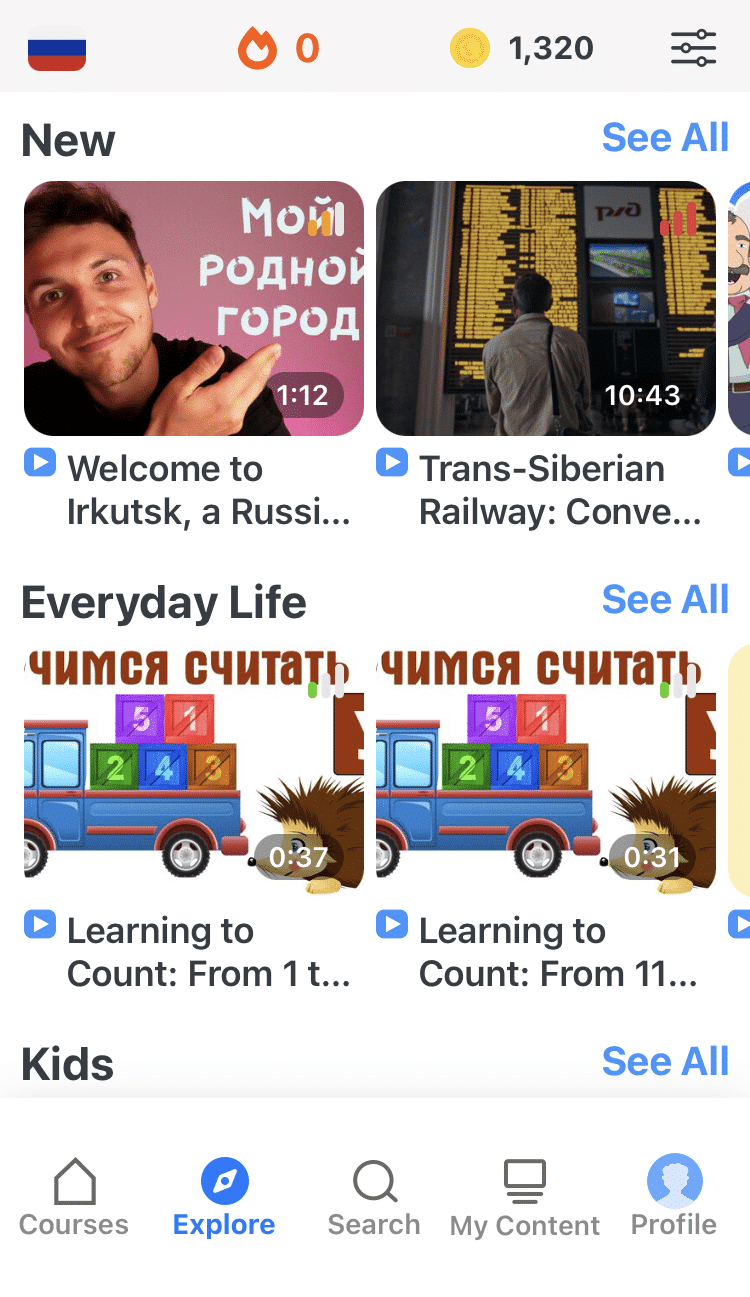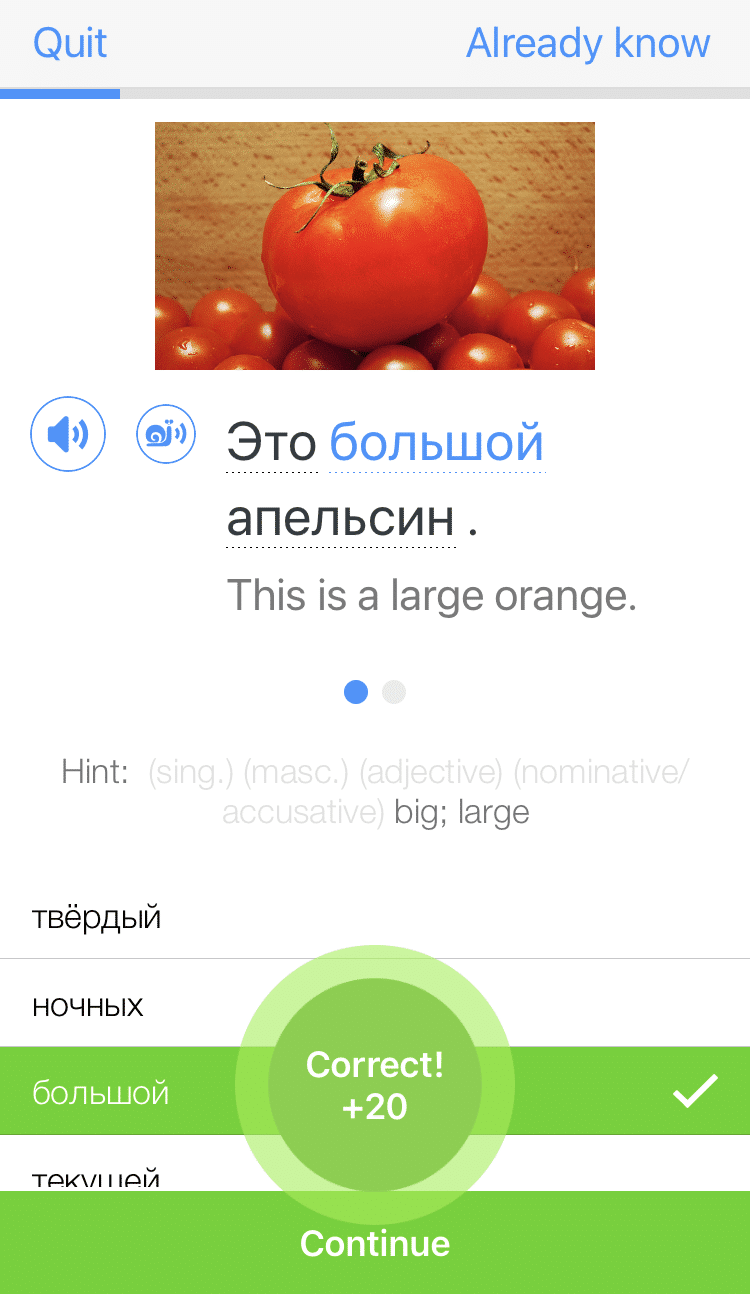
22 Traditional Russian Games
Every year, Russia holds the tank biathlon, a military sport and game where the competitors are, well, tanks. Of course, there are some other traditional Russian games that don’t require you to be part of a tank crew to play.
Log off from your device, put away the digital entertainment and check out these 22 traditional Russian games.
Contents
- Тише едешь (Tishe edesh) — Quieter you go
- Казаки-Разбойники (Kazaki-Razboyniki) — Cossacks and Robbers
- Резиночка (Rezinochka) — Elastic
- Ручеёк (Rucheyok) — Brook
- Горелки (Gorelki) — Burners
- Прятки (Pryatki) — Hide and Seek
- Ладушки (Ladushki) — Patty-cake
- Колечко-колечко (Kolechko-Kolechko) — Ring-ring
- Мафия — Mafia
- Крокодил — Crocodile
- У медведя во бору (U medvedya vo boru) — In the Bear’s Forest
- Кости бабки (Kosti babki) — Knucklebones
- Бирюльки (Biryulki) — Spillikins
- Городки (Gorodki) — Townships
- Катание яиц (Kataniye yaits) — Egg rolling
- Бой мешками (Boy Meshkami) — Bag fight
- Самбо (Sambo) — “Sambo”
- Хоккей с мячом (Khokkey s myatchom) — Ball hockey
- Лапта (Lapta) — “Lapta”
- Чижик (Chizhik) — Siski
- Кубарь (Kubar) — “Kubar”
- Дурак (Durak) — Fool
- And One More Thing...
Download: This blog post is available as a convenient and portable PDF that you can take anywhere. Click here to get a copy. (Download)
Тише едешь (Tishe edesh) — Quieter you go
If you watched the hit Korean Netflix show “Squid Game,” you already know this one—although the Russian version is decidedly less deadly.
In the Russian variation of “Red Light, Green Light,” the person who’s “it” stands on one side, the “finish line,” of a playing area, facing away from the rest of the players. The goal of the game is for players to get as close to the finish line as they can without “it” seeing them.
Whoever’s “it” then chants:
Тише едешь, дальше будешь, стоп! (The quieter you go, the further you’ll be, stop!).
At the word “стоп,” they quickly turn to face the group. The players freeze, and whoever is still moving has to go back to starting line.
The game continues until someone managed to reach the finish line, at which point they become “it”!
Казаки-Разбойники (Kazaki-Razboyniki) — Cossacks and Robbers
This game has its roots in the 16th century, when Cossacks from cities and settlements hunted down and caught “thief” Cossacks for a reward.
In this variant of “cops and robbers,” the players are split into teams of two. The Cossacks, representing defenders or law enforcement, try to catch and capture the Robbers, who aim to outmaneuver them and escape. The game is won either when the Cossacks have caught all the robbers, or when the robbers manage to take over the Cossack headquarters.
There are many variations on the rules of this game, like secret passwords and the ability to free captured robbers. At the end of the day, the idea is to work together as a team.
Резиночка (Rezinochka) — Elastic
In my childhood, we called this one “Chinese jump rope,” though it’s not too similar to jump rope. Surprisingly, the other part of the name isn’t a misnomer: The game originated in China in the 7th century and made its way to Russia in the mid-1900s.
You need at least three people to play this game. Two people stand with their legs shoulder-width apart and stretch a long elastic loop between them. The elastic is placed just above the backs of their feet for the “first” position, and gradually it’s moved higher to increase the difficulty: to the calves, then behind the knees and finally at hip-height.
The jumper is tasked with completing preset movements, like jumping in between the elastics without touching them or jumping on top of them. Sometimes, songs and rhymes accompany the jump sequences.
Ручеёк (Rucheyok) — Brook
Variants on this party game have been played in different parts of this world. Participants pair off and stand next to each other, holding hands up high to form a “tunnel” between them. One person is unpaired, and stands in the front.
The unpaired person walks under the tunnel of hands and chooses a pair by reaching up and taking someone’s hand. Their partner moves to the front and becomes the next person to find a new partner. In one variation, the new couple can be “captured” by the other pairs lowering their hands as they run through the tunnel.
When this one moves smoothly, it looks like a naturally undulating river!
This game was initially like an 18th-century Tinder since it required holding hands with people, usually of the opposite sex. Scandalous!
Горелки (Gorelki) — Burners
This one’s similar to “Red Light, Green Light” as well, but with a twist.
Players line up in pairs at the back of the playing field. One person, called the “burner” stands in front them, facing away. When the game starts, the players chant this rhyme:
Гори, гори ясно, (Burn, burn bright)
Чтобы не погасло. (So you don’t go out.)
Стой подоле, (Stand there longer,)
Гляди на поле, (Look at the field)
Едут там трубачи (The trumpeters are going there)
Да едят калачи. (And eating kalaches.)
Погляди на небо: (Look at the sky:)
Звёзды горят, (The stars are burning,)
Журавли кричат: (Cranes cry:)
— Гу, гу, убегу. (Gu, gu, I’ll run away.)
Раз, два, не воронь, (One, two, don’t be slow.)
А беги, как огонь! (And run like fire!)
At the last part of the rhyme, the pair at the front of the line break off from each other and run around the burner. The burner has to touch either person as they run by without turning around before the runners have a chance to get a hold of each others’ hands again.
This game was originally played by single men and women. The burner was always a guy, and he was tasked with catching the woman of the couple running by. It was literally speed dating!
Прятки (Pryatki) — Hide and Seek
Who hasn’t played Hide and Seek at some point in their life? As with the American variation, Russian Hide and Seek has one person cover their eyes and count while the rest of the players hide. The seeker then shouts out a warning to the hiders, usually one of these:
раз-два-три-четыре-пять, я иду всех вас искать! (One, two, three, four, five, I’m going to look for you all!)
пора-не пора, иду со двора (Whether it’s time or not, I’m leaving the yard)
кто не спрятался, я не виноват(а) (Whoever didn’t hide, I’m not at fault)
When a seeker spots one of the people hiding, they both make a run for the starting spot of the search. Whoever reaches the spot first calls out a phrase that’s chosen before the game (these vary widely by region). Sometimes, the found hiders help the seeker find the rest of the players.
There’s a fun variation of this classic called сардинки (sardines), where the roles are reversed: One person hides while the rest of the players look for him. Every time someone finds the hider, they have to join him in his hiding spot. Last person to find the hiding players becomes the hider in the next round.
Ладушки (Ladushki) — Patty-cake
This game consists of a series of rhythmic hand gestures and claps while singing rhymes. Each verse of the song corresponds to a specific hand movement. It’s traditionally a game played with young kids to help them develop communication and motor skills, but school aged kids love it, too.
While there are lots of variations and rhymes, here’s the original rhyme that the game is named for:
Ладушки, ладушки, (Patty-cake, patty-cake)
Где были? — У бабушки! (Where were you? At Grandma’s!)
Что ели? — Кашку. (What did you eat? Kasha.)
Что пили? — Бражку. (What did you drink? Brazhka.)
Кашка масленька, (Kasha with butter,)
Бражка сладенька, (Sweet brazhka,)
Бабушка добренька! (Grandma is good!)
Попили, поели, (Drank, ate,)
Домой полетели, (Flew home,)
На головку сели, (Sat on the head,)
Сели, посидели, (Sat down, sat for a bit,)
Дальше полетели! (Then flew on!)
If the game is played with a small child, at the words “На головку сели” (Sat on the head), the adult will put their hands on the child’s head.
Колечко-колечко (Kolechko-Kolechko) — Ring-ring
How good are you at sleight of hand? In this game, all but one person sit down in a row and hold their hands out, palms facing each other. The leader takes a very small item—traditionally a ring—and holds it in their palms, too. They then go to each sitting person in turn and run their hands between each person’s clasped hands, while saying this rhyme:
Я ношу-ношу колечко и кому-то подарю! (I carry, I carry a ring and I will give it to someone!)
At some point, the leader secretly passes the ring to someone, who has to remain calm and not give away that they have it.
At the end of the rhyme, the leader says:
Колечко-колечко, выйди на крылечко! (Ring-ring, come out on the porch!)
The person with the ring has to quickly run to the leader. The other players try to guess who has the ring and prevent that person from leaving the group. If they manage to catch the person with the ring, the catcher becomes the new leader; otherwise, the previous leader continues the game.
Мафия — Mafia
You might have played this one, or a variation on it, as a teenager. It’s known by several names, like Mafia, Werewolf, Assassin, Village, and even more. The briefly popular game “Among Us” is a more modern, app version of the premise!
The original social game was created by Dimitry Davidoff in 1986. The game requires a group of people to play. At the beginning of each game, players are assigned secret roles: a mafioso (or werewolf), a detective, a doctor and the villagers.
The game is played in night and day rounds: During the night round, everyone closes their eyes except the mafioso and an assigned game moderator. The mafioso silently chooses a player to “kill” when the day begins. During the daytime round, players discover who was killed overnight and discuss among themselves who the mafioso might be. Doctors have a chance to “save” a player from death, and detectives can accuse players of being part of the mafia.
Some variations add different roles and house rules, but the basic premise will be familiar to most people!
Крокодил — Crocodile
This popular Russian party game is another you might recognize as a different name: Charades! Working either in teams or individually, players take turns showing, through pantomime, a secret word they’re assigned. The other players are tasked with figuring out what the word is.
This game was so popular that it even aired as a Russian variety show between 2010 and 2012, also named “Crocodile.” Not sure where to start playing this one? There are pre-made card decks and even apps to help you along!
And if you like the idea of combining traditional, off-screen Russian games with Russian media learning, you might enjoy the FluentU Russian program. FluentU takes authentic videos—like music videos, movie trailers, news and inspiring talks—and turns them into personalized language learning lessons. You can try FluentU for free for 2 weeks. Check out the website or download the iOS app or Android app. P.S. Click here to take advantage of our current sale! (Expires at the end of this month.)
У медведя во бору (U medvedya vo boru) — In the Bear’s Forest
This cute game is mostly played with groups of very little kids while an adult or one of the kids plays the role of a sleeping bear. The kids pretend to pick mushrooms and berries around the bear, saying this rhyme and acting it out:
У медведя во бору (In the bear’s forest)
Грибы-ягоды беру. (I take mushrooms and berries.)
А медведь-то спит (And the bear is sleeping)
И на нас не глядит (And he does not look at us)
Мы медведя приласкали, (We caressed the bear,)
Мы его пощекотали. (We tickled him.)
Зарычал медведь — беда! (The bear growled—there’s trouble!)
Разбегайся кто куда! (Run away wherever you can!)
At the end of the rhyme, the bear wakes up and chases the kids around. Whoever gets caught first becomes the bear in the next round.
Кости бабки (Kosti babki) — Knucklebones
The is an ancient folk game that played a role in the development of modern dice. The objective of the game is to skillfully throw small bones, known as бабок (babok) which gave the game its name. The bones are thrown at a collection of items (like other bones) with the aim to knock out as many as you can in one throw.
In the past, the game used foot bones from hooved animals like cows or sheep, but the modern board version of the game typically uses a plastic or metal six-sided piece called a hedgehog. You can also play the game with balls, and really any small toys that you can round up (as you can see in the video above).
Бирюльки (Biryulki) — Spillikins
As a kid, I knew this game in the United States as “Pick Up Sticks,” though the Russian version uses a variety of other miniature items like sticks, wires or straws. Other versions are played with finely crafted spillikins pieces, created on a lathe.
The goal of the game is to make a pile of the spillikins, then use either a stick or a special hook to lift out single items one at a time without disturbing or moving the rest.
The game gained popularity in the 19th century in salons, with pieces made from wood or ivory. Game pieces were even sold in fancy gift boxes, and gifted alongside boxes of chocolate!
Городки (Gorodki) — Townships
This Russian folk sport is similar to bowling and horseshoes. Players build little “cities” out of long cylindrical wooden pieces, then throw a bat or a stick at the city with the aim of knocking down as many of the pieces as possible.
The game gained popularity in the 18th century and has since established some standard patterns for arranging the city pieces, as well as some rules for playing competitively.
In fact, since 1936, there have been competitions and official championships! Although the game’s popularity declined in the 1980s and 90s, it’s recently made a comeback, and competitions are starting to be held again in towns across Russia.
Катание яиц (Kataniye yaits) — Egg rolling
Egg rolling is a traditional Russian game associated with Easter, where participants roll painted eggs down a slope. The goal is to get your egg the furthest from the starting point without it breaking.
Some varieties have special playing fields and chutes constructed for rolling the eggs, while others use literal hills.
Usually, a marbles-like element is added to the game: Any eggs that your egg touches as it comes down are won. Sometimes, prizes are added to the playing field that can be won by aiming your egg to touch it on the way down.
Бой мешками (Boy Meshkami) — Bag fight
This game looks about as ridiculous and fun as it sounds, and you can play it right now as a variation on a pillow fight. All you need is a fence or bench (something to straddle and balance on) and a friend!
Hold one hand tightly behind your back, and hold your pillow—or a straw-filled bag, as in the original version of the game—in the other in front of you. Take turns swinging at your opponent. Whoever gets knocked off first loses!
Самбо (Sambo) — “Sambo”
Now we’re delving somewhere in the murky lines between sports and games. Sambo is a Russian martial art and combat sport that combines elements of judo and wrestling. Participants engage in grappling, throws and ground-based techniques to score points or achieve submission holds.
Самбо stands for САМозащита Без Оружия (SAMozashchita Bez Oruzhiya), which translates to “self-defense without weapons,” and is exactly what it says in the tin. The martial art was developed in the early 20th century by the Soviet Red Army as a form of military self-defense, and is still a popular sport and an officially recognized type of amateur wrestling.
Хоккей с мячом (Khokkey s myatchom) — Ball hockey
What happens when you want to continue playing ball outside but everything is literally frozen over? This game is born. Also known as Бенди (Bandy) or Русский хоккей (Russian hockey, outdated) likely originates in England, Wales or the Netherlands—but Russia has adopted the sport as a fun winter pass-time.
Each team consists of 11 players and games normally take two rounds of 45 minutes each. The sport plays out similar to hockey. Sticks have a hook at the end like hocke, but instead of a puck, the bandy ball is the size of a tennis ball and covered in a hard plastic coating. Players use skates to move around the ice, guiding a ball with sticks and aiming to score a point by getting the ball past the opposition’s stick-less goalkeepers and into the net.
Лапта (Lapta) — “Lapta”
When there isn’t ice everywhere, you can switch back to your regular baseball-like game, Lapta.
Two teams of six compete against each other, with one pitcher and one hitter on each team. The pitcher throws the ball, which the hitter hits with a flat bat as far as possible. The objective of the hitter is to run to the finish line, then run back to the starting line, without getting hit with the ball on the way. The opposing team, of course, does everything they can to get the ball and get the hitter with it.
Чижик (Chizhik) — Siski
This game can be played with nothing but some sticks. You need two small but thick sticks, and one large and sturdy one.
One stick is placed flat on the the ground. The other, known as a Siskin and traditionally pointed at both ends, is leaned against it. The player hits the raised portion of the Siskin with the bat, launching it into the air. She then uses the large stick like a baseball bat, to hit the small pointed stick in mid-flight.
While other games of this kind focus on getting the ball (or, in this case, stick) as far as possible from the hitter, this game is more about control and accuracy. The aim is to get the Siskin into either a pre-dug hole or within bulls-eye like lines drawn on the ground.
Кубарь (Kubar) — “Kubar”
Did you play with tops when you were a kid? I remember spending an inordinate amount of time mastering the spinning top that required you to twist a string around the top then whip it into a spin on the floor.
Kubar is similar to this, but instead of a string, it uses a whip or rope. Players start a large wooden top spinning in the same way as a regular top: by winding the rope around the top, then pulling it quickly to send the top into a spin. They can then use the whip on the top, hitting it from the side and continuing the spin.
Experts can keep the top spinning for a very long time, and even direct it to go where they want it to!
Дурак (Durak) — Fool
This game is so popular that it even made its way into the cafeterias of NYC schools, where I saw people of a wide range of ethnicities playing it. It was always called “Durak” or “Stupid,” and it’s one of those “easy to learn, difficult to master” card games.
A standard deck of 36 cards is shuffled, and the dealer gives out six cards to each player. Then, one card is dealt face up and the rest of the deck placed face down on top of it. The suit of the revealed card indicates the “trump” suit for that game.
Players take turns attacking their opponents with cards that they have to “beat” by placing either a higher value card of the same suit, or a card of the trump suit. If all cards are beaten, they’re placed in the discard pile and each player draws cards until they have six in their hand again. If they can’t beat the cards before them, they take them into their hand while the attacker draws to six.
Whoever is left with the most cards at the end of the deck is the “fool,” or loser of the game. This game can be played by 2-4 players and requires quite a bit of strategy to get good at!
Are all these traditional Russian games making you itch to get off the screen and go play? Go for it, and embrace the joy of playing games that have been beloved for generations in Russian culture.
If you love learning Russian and want to immerse yourself with authentic materials from Russia, then I should also tell you more about FluentU.
FluentU naturally and gradually eases you into learning the Russian language and culture. You'll learn real Russian as it's spoken by real Russian people!
FluentU has a very broad range of contemporary videos. Just a quick look will give you an idea of the variety of Russian-language content available on FluentU:
FluentU makes these native Russian videos approachable through interactive transcripts. Tap on any word to look it up instantly.
Access a complete interactive transcript of every video under the Dialogue tab. Easily review words and phrases with audio under Vocab.
All definitions have multiple examples, and they're written for Russian learners like you. Tap to add words you'd like to review to a vocab list.
And FluentU has a learn mode which turns every video into a language learning lesson. You can always swipe left or right to see more examples.
The best part? FluentU keeps track of your vocabulary, and gives you extra practice with difficult words. It'll even remind you when it’s time to review what you’ve learned. You'll have a 100% personalized experience.
Start using the FluentU website on your computer or tablet or, better yet, download the FluentU app from the iTunes or Google Play store. Click here to take advantage of our current sale! (Expires at the end of this month.)
And One More Thing...







